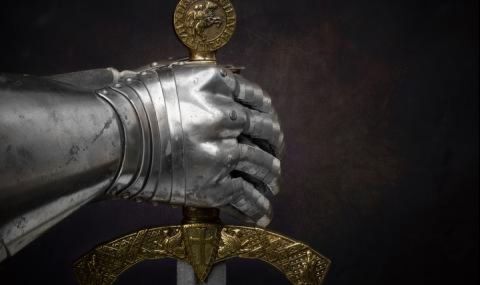On April 13, 1204, Constantinople was captured by the knights of the Fourth Crusade.
The knights had set out to liberate the Holy Sepulchre, but decided to deal with Constantinople. The reason was a series of financial commitments that had been made but not kept.
Venice had undertaken to transport the army of 33,500 crusaders and 4,500 horses in return for payment and some services. Doge Enrico Dandolo demanded 85,000 silver marks, but the crusaders had only 51,000. To supplement the amount, Venice demanded that they attack and capture the important port of Zara in Dalmatia (today's city of Zadar in Croatia). After Zara, the march headed to Constantinople to help the deposed emperor regain his throne against the support of Byzantium in the battles with the infidels. Alexius ascended the throne, but was unable to pay the promised sum, which turned the Western knights against him.
And the emperor himself fled to Nicaea in Asia Minor.
An attempt was made to elect a new emperor, but on April 13 the two Lascarid brothers, one of whom was elected, fortified themselves in Asia, and the patriarch sought refuge in Thrace. The Crusaders spared the lives of the noble and high-ranking citizens who remained in the city, such as the sister of the King of France - Agnes, as well as Maria, the daughter of the Hungarian King Bella III from 1172 - 1196. Both were empresses - married respectively to Andronicus I Komnenos (1183 - 1185) and Isaac II Angelus (1185 - 1195 and 1203 - 1204).
At the same time, regardless of their oaths, the Latins indulged in massive plunder. The sack of Constantinople remains a famous page in the history of medieval Europe. It is known that the plundering of the imperial capital fueled anti-Latin polemics, which led many historians to conclude that the schism separating Byzantium and Rome did not actually come into effect until 1204. The then Pope Innocent III himself vehemently expressed his indignation at the knightly excesses.
A division of the lands followed. As early as March 1204, the division was discussed in the crusader camp. In addition to the emperor, who was to receive lands on both sides of the Straits, Boniface de Montferrat was also to receive lands on both sides, and he also received the city of Thessaloniki. Baldwin gave Count Louis the Duchy of Nike /Nicaea/ in Asia Minor, and the Duchy of Philippopolis /Plovdiv/ to Count Rainier de Tri. The remaining territory was divided, after consulting the imperial cadastre, into 24 possessions, 12 each for the crusaders and the Venetians. The area depended on the size of the army. The services at the court were entrusted to the knights and most of them had Western titles - constable, marshal, etc. All barons generously distributed fortresses to the orders throughout the territory of Byzantium.
The consequence of the fall of Constantinople and the conquest of the lands in Thrace and Asia Minor was the formation of the Latin Empire. It was created on the basis of a preliminary agreement between the Latins and the Venetians. Like any medieval state, the Latin Empire had to have a ruler. The election of the new emperor was carried out by 12 electors - 6 each from the Venetians and the Crusaders. There were disagreements in the army itself regarding the choice for and against. There were two contenders - Boniface de Montferrat and Baldwin de Flanders and Hainaut. The council made a decision - whoever was elected emperor, the other would agree without question to become his vassal. The council met in a church in the palace of the Doge of Venice Dandolo. According to Clary, the election of Baldwin was unanimous, while other authors, mostly Venetians, speak of some initial disagreement. This includes Nicetas Choniates, who reports that Dandolo persuaded the council to settle on Baldwin, who was younger, more unstable, and therefore - easier to manipulate. The candidacy of Boniface de Montferrat was rejected by the Venetians, who feared making their compatriot emperor and putting their power under a possible threat. The council settled on Baldwin and the election was announced by the bishop of Soissons.
